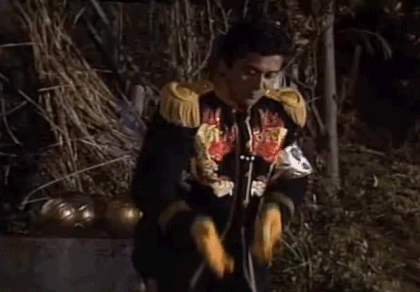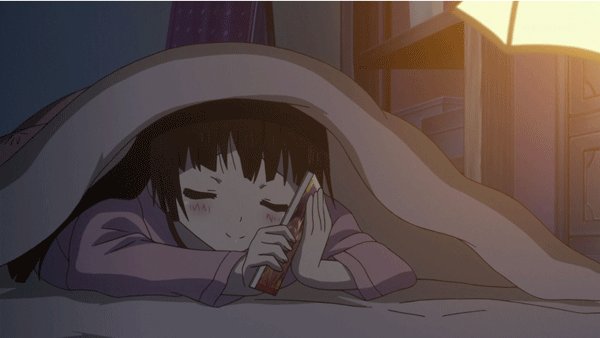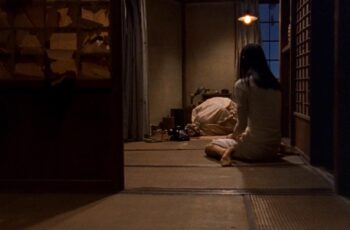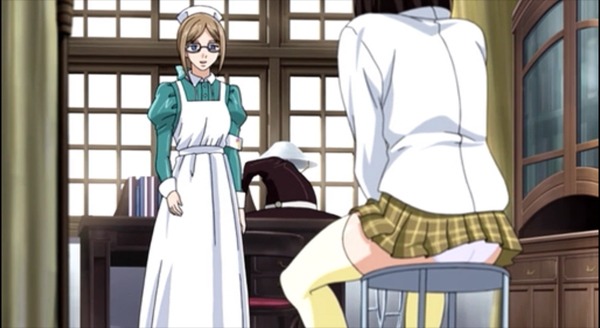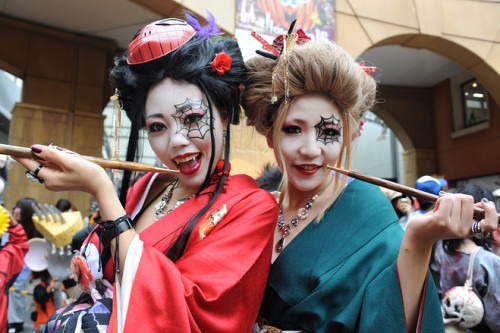
Up until 2000, Halloween was only something the Japanese heard about in English classes. That changed when Tokyo Disneyland started decorating for the holiday. The first event was held back in 1997, and it was a hit. Over time it became an annual autumn event. Universal Studios Japan joined the act in 2002 with “Hollywood Halloween” (Moon, 2013). Today, you can find many people celebrating the holiday with costume parties and trick-or-treat.
The History of Halloween
Let’s backtrack and discuss the history of Halloween in the West. The holiday originated in Celtic Europe as the Celtic New Year called Samhain. The festival celebrated the end of the harvest and the beginning of winter. Our idea of trick-or-treating also began at this time. Scottish and Irish youths would plan elaborate pranks, such as disassembling a plow and putting it back together – complete with the horse- in a farmer’s sitting room. Goats were also lowered down chimneys (Trevarthen, 2010).
The New Year preceded All Saints Day and All Souls Day, Catholic holidays that honor departed saints and relatives. In the 9th century, Pope Gregory IV added Halloween to the church calendar, decreeing it as a day of vigil to honor martyrs and saints. By the end of the 15th century, the practice expanded to include the gathering of evil elements: witches and other beings of darkness that mocked the holy day. Halloween didn’t become widespread in the US until mass Irish immigration in the 1840s. They brought with them the traditions of Samhain mixed with the practices of the Catholic holidays (Levinson, 1992).
Many countries in Western Europe observe Halloween as a religious holiday with extra masses and prayers at graves of loved ones. Britain and the US see it as a night of fun. Japan inherited this view of Halloween.
The Appeal of Halloween in Japan
“‘Japanese wear suits every day, so on the weekend they like to be different.'”
Japanese culture is ruled by etiquette and strong social restrictions. Cosplay developed as a counter culture and a way to escape these restrictions for a time. However, cosplay remained a subculture. Halloween provides a wide appeal by plugging into the Japanese love for seasonal festivals. Globalization has made Halloween practices like pumpkin carving better known. It helps that English has become required for Year 5 and 6 primary school students. Some companies have also made English their official business language. As more people learned English, they learned about Halloween, and many schools began to pick up Halloween customs to make learning English fun (Moon, 2013).
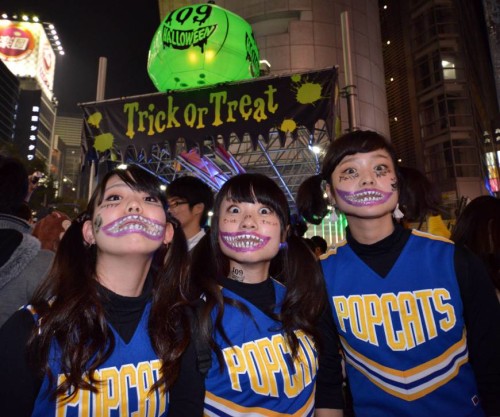
In other words, more children grew up with Halloween, making the holiday a part of Japanese childhood. The holiday allows both children and parents “let their hair down” and enjoy feelings of nostalgia. Unlike other Western holidays, Halloween lacks a strong association with Christianity. All Saints Day and All Souls Day are separate from Halloween. Because of this, Halloween lacks the cultural subtexts we have in the West. It becomes simply a fun, commercial holiday (Moon, 2013).
Japan starts the festivities as early as mid-September and party all through October (Hardach, 2007).
“The matsuri, or festival, might be seen as a communal experience that allows behaviours outside rigid behaviours and etiquette, one reason this social pressure release valve has been so crucial in Japan historically,”
–Patrick Galbraith, a Japanese culture researcher at Sophia University in Tokyo (Hardach, 2007).
Halloween offers a month long–okay, almost two months–excuse for partying and dressing up. Halloween is one of the rare holidays where it is socially acceptable to dress up as cats, vampires, zombies, manga characters, or whatever else you want. Japan has a host of demons, ghosts, and other creatures to dress up as. It is a great way to creatively express yourself.
Cosplay vs. Halloween
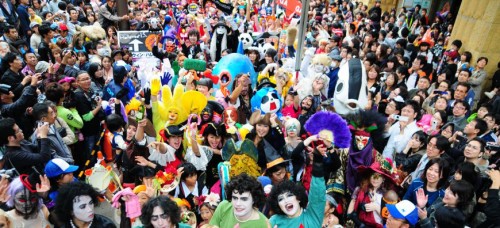
Halloween can help cosplay culture gain better acceptance. It is a short hop from dressing up off and on throughout a month of Halloween celebration to dressing up on and off the rest of the year.
Consumerism and Social Media
Halloween in both Japan and the United States is a holiday of consumption. But is it really all the different from Thanksgiving and Christmas?
All of these holidays have certain social expectations. You spend and do certain things because it is what you are supposed to do. One of the main drivers of Halloween are nightclubs with alcohol companies reaping much of the profit (Richards, 2014). A month of partying and costuming equates to a lot of money spent.
Halloween, according to Richards (2014) is eclipsing the Japanese New Year as one of the biggest festivals for businesses. Shows like The Walking Dead timed their new seasons to add fuel to the holiday.
Social media also fuels the fervor. Young adults enjoy sharing their costumes and parties online, giving other people ideas and pushing Halloween into popular culture.
For both Japan and the West, Halloween kicks off autumn and winter holiday seasons. It is a great way to blow off steam and be a different person for a time. It looks as if Halloween will be increasing in popularity for years to come.
References
Halloween in Japan 2014. Japan Times. http://www.japantimes.co.jp/news/2014/10/31/national/halloween-japan-2014/#.ViKESiuAl-I
Hardach, Sophie (2007) Halloween: just another ‘cosplay’ day in Japan. The Globe and Mail.
Levinson, S., Mack, S., Reinhardt, D., Suarez, H., & Yeh, G. (1992). Halloween As A Consumption Experience. Advances In Consumer Research, 19(1), 219-228.
Moon, Rona (2013) Since when as Halloween so popular in Japan? JapanToday http://www.japantoday.com/category/lifestyle/view/since-when-was-halloween-so-popular-in-japan
Richards, Steven (2014) How Japan fell in love with Halloween for adults. MarketWatch. http://www.marketwatch.com/story/how-japan-fell-in-love-with-halloween-for-adults-2014-10-30
Trevarthen, Geo A. (2010) The Celtic Origins of Halloween Transcend Fear. Phi Kappa Phi Forum.
